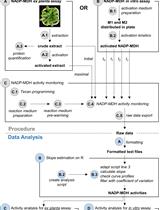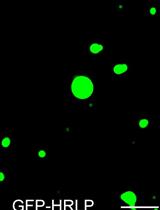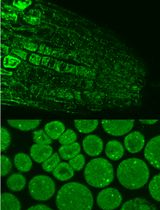- EN - English
- CN - 中文
Trehalase Activity in Arabidopsis thaliana Optimized for 96-well Plates
一种适用于利用96孔板测定海藻糖酶活性的方法
发布: 2013年10月20日第3卷第20期 DOI: 10.21769/BioProtoc.946 浏览次数: 12660
评审: Tie Liu
Abstract
Trehalose is a nonreducing disaccharide. It is a common sugar in bacteria, fungi and yeast, where it functions as a carbon source and stress protectant. In contrast, plants, although encoding large trehalose biosynthesis gene families, contain only small amounts of trehalose. The intermediate compound of trehalose, trehalose-6-phosphate (T6P), is a signaling molecule in plants, regulating metabolism, growth, and development. Most plants contain only a single trehalase, the enzyme that specifically hydrolyzes trehalose into two glucose molecules. High trehalase activity has been suggested to be part of the defense mechanism in plants hosting mycorrhizal fungi, rhizobia, and the plant pathogen Plasmodiophora brassica. Recently, it was shown in Arabidopsis thaliana that high trehalase activity is associated with an increase in drought stress tolerance and that trehalase fulfills an important role in stomatal regulation. Here we describe a protocol for measuring trehalase activity in Arabidopsis tissues, optimized for 96-well plates. Dialyzed protein extracts will be incubated with trehalose, followed by the quantitation of the released glucose using glucose oxidase-peroxidase.
Keywords: Arabidopsis thaliana (拟南芥)Materials and Reagents
- Plant tissues
- Liquid nitrogen
- MES
- Phenylmethylsulfonyl fluoride (PMSF)
- EDTA
- Polyvinylpyrrolidone (PVP)
- Dithiothreitol (DTT)
- CaCl2
- Glucose
- Bovine serum albumin (BSA)
- Na2CO3
- K-Na-tartrate
- CuSO4.5H2O
- KOH
- NaOH
- Folin & Ciocalteu's phenol reagent (Sigma-Aldrich, catalog number: 47641 )
- Trehalose (Sigma-Aldrich, catalog number: T9531 )
- Glucose, GOD-PAP (DIALAB GmbH, catalog number: D95218B )
- Extraction buffer (see Recipes)
- Dialysis buffer (see Recipes)
- Trehalose buffer (see Recipes)
- Glucose standards (see Recipes)
- BSA standards (see Recipes)
- Lowry buffers (see Recipes)
Equipment
- Mortars and pestles
- Spectra/Por® 1 Dialysis Membrane (IEEE, catalog number: 132660 )
Note: 96-well dialysis systems can be used for the dialysis of multiple samples.
- Transparent 96-well plates with flat bottom
- Rocker
- Refrigerated microcentrifuge
- Pre-chilled microcentrifuge tubes
- 100 ml cylinder
- Magnetic stir plate and magnet
- Cold room
- Spectrophotometric plate reader
Procedure
文章信息
版权信息
© 2013 The Authors; exclusive licensee Bio-protocol LLC.
如何引用
Readers should cite both the Bio-protocol article and the original research article where this protocol was used:
- Houtte, H. V. and Dijck, P. V. (2013). Trehalase Activity in Arabidopsis thaliana Optimized for 96-well Plates. Bio-protocol 3(20): e946. DOI: 10.21769/BioProtoc.946.
- Van Houtte, H., Vandesteene, L., Lopez-Galvis, L., Lemmens, L., Kissel, E., Carpentier, S., Feil, R., Avonce, N., Beeckman, T., Lunn, J. E. and Van Dijck, P. (2013). Overexpression of the trehalase gene AtTRE1 leads to increased drought stress tolerance in Arabidopsis and is involved in abscisic acid-induced stomatal closure. Plant Physiol 161(3): 1158-1171.
分类
植物科学 > 植物生物化学 > 蛋白质 > 活性
生物化学 > 蛋白质 > 分离和纯化
生物化学 > 糖类 > 二糖
您对这篇实验方法有问题吗?
在此处发布您的问题,我们将邀请本文作者来回答。同时,我们会将您的问题发布到Bio-protocol Exchange,以便寻求社区成员的帮助。
Share
Bluesky
X
Copy link














